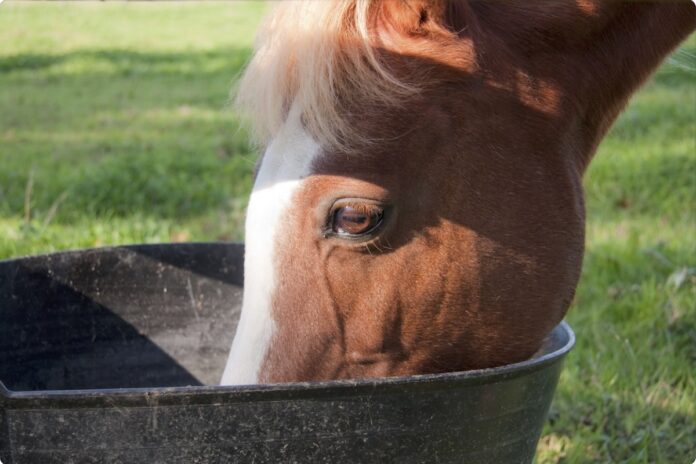Balancer 101
Good nutrition is all about balance and while many horses don’t need the calories provided by compound feed, they do require essential nutrients. SPILLERS nutritionist Sarah Nelson explains the when, why and how of feeding a balancer, dispels some common myths and shares tips on helping customers choose the most suitable option for their horse.
What is a balancer?
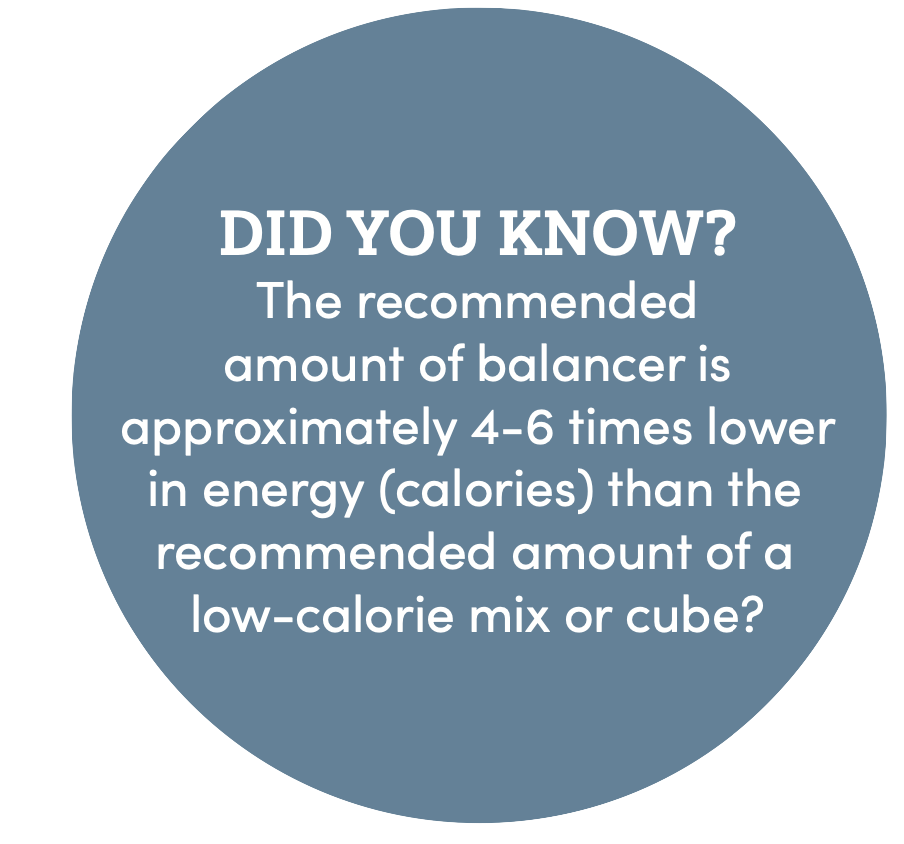
Balancers are small, nutrient dense feeds (normally pellets), designed to provide a concentrated supply of vitamins, minerals and amino acids. Due to the low feeding rate, they contribute minimal calories, starch and sugar to the diet, making them ideal for good doers, including those prone to excitability and laminitis. Many balancers also include added functional ingredients such as pro and prebiotics for digestive support or glucosamine and MSM to support joint health.
Feeding rate
Most pelleted balancers are designed to be fed at rate of 100g per 100kg bodyweight per day (alongside a forage only diet) which is equivalent to 500g per day for a 500kg horse. Customers feeding a balancer alongside another feed containing vitamins and minerals should reduce the amount accordingly. For example, feeding half the recommended amount of balancer alongside half the recommended amount of compound feed generally works well - provided the additional calories provided by the compound feed are needed!
When should I recommend a balancer?
Balancers are ideal for horses and ponies that maintain weight easily (or too easily!) on forage alone, but they are also a great way of topping up vitamin and mineral intake in those that maintain weight easily on less than the recommended amount of compound feed (other feeds containing added vitamins and minerals). They can also be recommended to customers who prefer to use feeds without added vitamins and minerals as the main ‘bucket feed’ such as sugar beet, alfalfa and grass nuts/chaff.
Why are balancers necessary?
While forage only diets can easily meet or exceed energy (calorie) requirements for good doers, they may fall short of key nutrients including copper, zinc, selenium, vitamin E and lysine.
Vitamin E
Vitamin E is a powerful antioxidant, essential for supporting muscle and immune health. Free access to green pasture may provide sufficient (although not necessarily optimum) amounts of vitamin E to meet maintenance requirements and in some cases, work requirements too, but levels in hay and haylage may be negligible.
Vitamin A
Beta-carotene (which gives carrots their orange colour) in forage is converted to vitamin A in the small intestine and to some extent the liver. Horses with access to grazing are unlikely to be deficient in vitamin A but hay and haylage shouldn’t be relied upon to meet requirements. It’s been reported that approximately 80% of the beta-carotene in hay is lost during harvest, with levels continuing to decline by around 6-7% per month of storage.
Zinc, copper and selenium
Although balancers are of increased importance for those on a calorie restricted diet, even unrestricted access to average grazing may fall short of copper, zinc and selenium requirements.
Protein and amino acids
The quality of protein in the diet is equally as important as the amount. Proteins are made up building blocks called amino acids, with protein quality determined by the profile of amino acids. There are 21 amino acids in total, 9 of which are called ‘essential’ because they can’t be produced by the body and must be provided in the diet. Dietary protein is broken down into amino acids and rebuilt (protein synthesis) to form proteins that are needed by the body. For protein synthesis to occur, amino acids need to be present at a specific ratio. If one amino acid is deficient, protein synthesis is limited, even if all other amino acids are over-supplied. Of all the essential amino acids, lysine is considered most important and the one most likely to be deficient in the diet. Lysine plays many essential roles, including muscle building, maintenance and repair.
The simple approach
Consider which, if any, functional ingredients (e.g., joint and digestive support) may be most beneficial. If customers are simply looking for essential nutrients to balance forage, look for a balancer without the added bells and whistles.
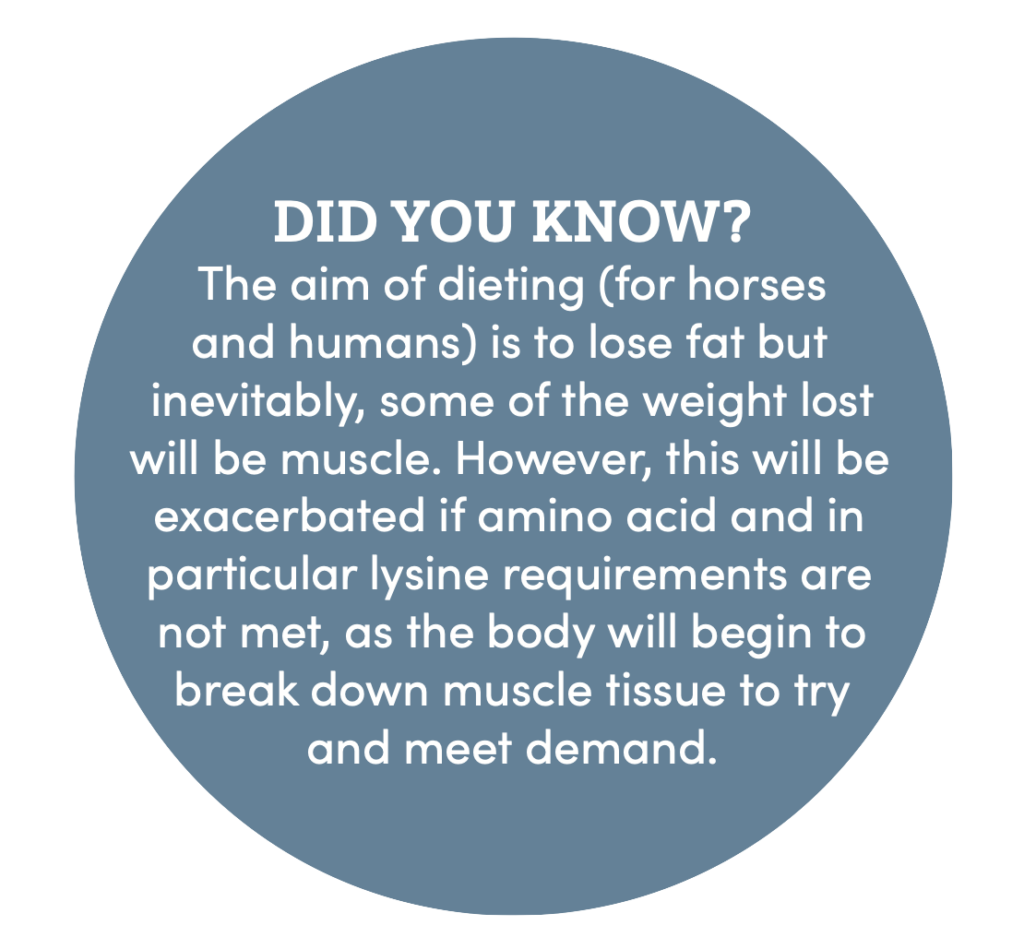
Hold the iron!
Advise customers to look for balancers without added iron - iron deficiency in horses is extremely rare and forage typically exceeds requirements, even in horses fed restricted rations. As iron is also one of the few minerals that can be harmful at relatively low levels, it’s sensible to avoid any unnecessary excess intake.
The truth about ‘lite’ balancers
You could be forgiven for thinking that ‘lite’ means lower in calories but in truth, ‘lite balancers’ are not significantly lower in calories than any other balancer when fed at the recommended amount (stud balancers are an exception to this rule). However, some ‘lite balancers’ may have additional benefits to offer. Look for products specifically formulated to balance a calorie restricted diet such as those based on restricted forage, soaked hay or where straw is used as a partial forage replacer. Some balancers may even contain ingredients to help support a healthy metabolism but consider balancers without probiotic live yeast for overweight horses. Live yeast may help to improve fibre digestion in the hindgut and while this might sound like a good thing, improving digestive efficiency yields more calories! In fact, recent research found that in weight loss resistant ponies, microflora involved in fibre digestion may adapt to become more prevalent/ more efficient!
Balancers are not conditioning!
The term ‘condition’ can mean different things to different people. To some for example, ‘condition’ may encompass topline as well as skin, coat and hoof health but when it comes to diet, ‘condition’ means fat coverage and ‘conditioning’ feeds are designed to promote weight gain or maintenance in those with high energy (calorie) requirements. While some balancers may contain the same level of calories as a conditioning feed on a kilo for kilo basis, they still contribute minimal calories to the diet when fed at the recommend amount.
Calorie comparison
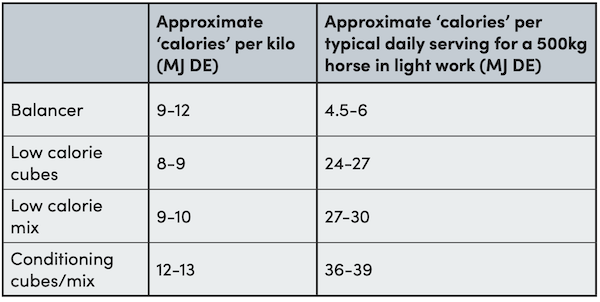
Stud balancers
Although the feeding rate for stud balancers is higher (due to high level of protein and amino acids required for foetal development, lactation and growth), they are still significantly lower in calories than traditional stud feeds per daily serving. Recommend a stud balancer for:
- Mares in late gestation (advise introducing in month 8)
- Lactating mares
- Foals and yearlings
- Stallions regularly used for covering/ collections
Changes in feed are generally unnecessary for mares in early and mid-gestation (provided they don’t have a foal at foot) and stallions only covering a few mares per season, provided their diet is already balanced and they are maintaining a healthy body condition.
Balancers vs vitamin and mineral supplements
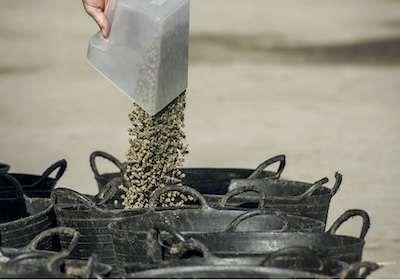
If you’ve ever found yourself questioning the difference between a balancer and a vitamin and mineral supplement you’re not alone – it’s a common point of confusion.
- Format: balancers normally come in pellet form while vitamin and mineral supplements are often a powder. This means balancers can be fed on their own (although they are often fed alongside a chaff) whereas vitamin and mineral supplements need to be mixed into a small amount of feed.
- Nutrient supply: balancers provide amino acids such as lysine while vitamin and mineral supplements contain very few if any amino acids.
- Feeding rate: most pelleted balancers are designed to be fed at 500g per day for 500kg horse vs approximately 40-150g for a powdered vitamin and mineral supplement which sometimes leaves owners concerned about feeding unnecessary calories. Although pelleted balancers provide more calories, the difference this makes to the overall diet is negligible in most cases, especially for those with access to grazing.










